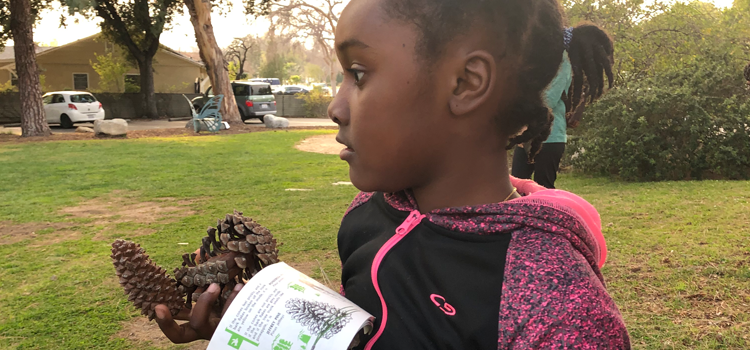Why Do Scientists Study Biodiversity?
Biodiversity—the variety of life in a habitat or ecosystem—is a good indicator of how healthy an ecosystem is, which is why it is important for scientists to know about the different types of species living in a particular area. Studying biodiversity gives scientists and researchers a better understanding of the impacts of human activity and climate change on the ecosystem.

What's in the Kit?
- 1 8x32 binoculars and carrying case
- 1 Birds of Southern California pamphlet
- 1 clip-on lens kit
- 1 tweezer
- 1 mini GPS location finder
- 1 USB charging cord
- 1 instructions packet
- 1 sharpie
- 1 eraser
- 1 observation journal
- Safety rules
Relevant Sustainable Development Goals (SDGs)

How To Help Scientists Collect Data Without a Smart Device
Step 1
Go to iNaturalist and follow the instructions to create an account and sign in.
Step 2
Go to iNaturalist Getting Started and scroll down to the Make an observation from the Web section for instructions on how to submit your observations via the web.
Step 3 (Optional)
Go to iNaturalist: Video Tutorials page to watch a tutorial on how to make and submit observations via the web. To upload multiple observation photos simultaneously, watch the How to Use iNaturalist's Photo Uploader video for instructions on how to record and upload an observation via the web.
Step 4
Use the Mini GPS tracker device included in the kit for location coordinates and elevation information. Press and hold the middle button to turn on the GPS and give it 8-15 minutes to connect to a satellite. Once it’s connected, the screen will display a signal icon with bars and a blinking black bullet on screen. Press the top button three times to see coordinates and two more times to see the elevation information measured in meters. Press and hold the middle button to turn the GPS off.
Step 5
Use a camera (not included in the kit) to take pictures of the plants and animals in your area. Take pictures of small things like insects or flowers with a macro lens from about an inch away. To take pictures of things far away, use the zoom or telephoto lens.
If you have a digital recorder, you can use it to record the sound of species in your surroundings.
Step 6
Write down the location coordinates and elevation along with the date and time of the observation on the data card included in the kit.
Step 7
Plug your camera, digital recorder, or memory card into an Internet/Wi-Fi-connected computer or laptop to upload and save your photos to a local drive in your computer/laptop or thumb drive.
Suggested Activity
Use the binoculars and the Birds of Southern California guide in the kit and see how many different species of native birds are in your neighborhood.
Step 8
Sign in to your iNaturalist account to begin sharing your observation photos or sound files by selecting the Upload button on the upper right of your screen. Follow the steps to submit your observations.
Useful Tip
If you prefer to submit your observation photo anonymously without creating an iNaturalist account, go to Observation Anonymous and select iNaturalist to access the observation form. Complete all fields on the form and select Submit.
Step 9
Complete our survey and return the kit to the library so someone else can contribute.


